Caleb Charland: Sundial
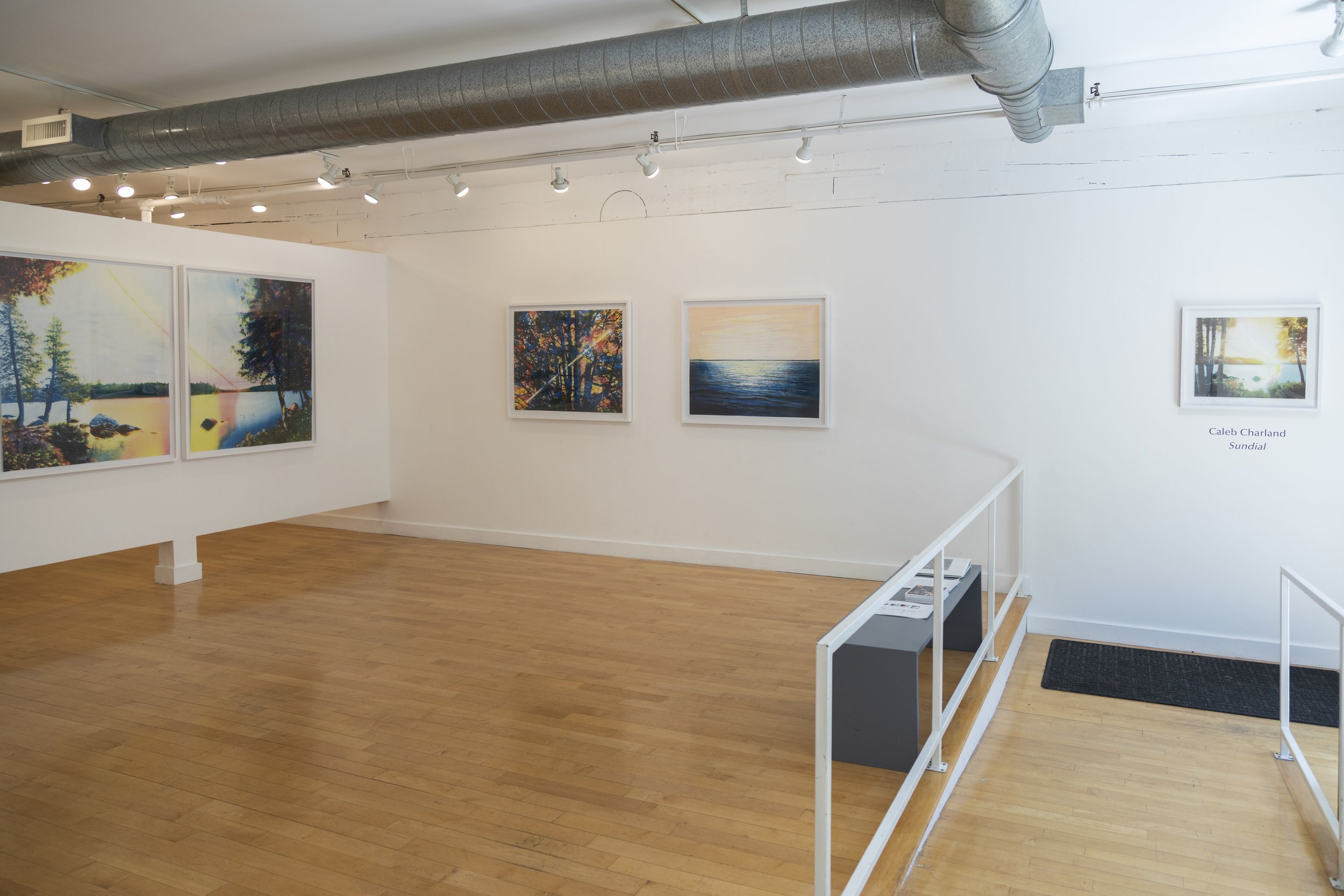
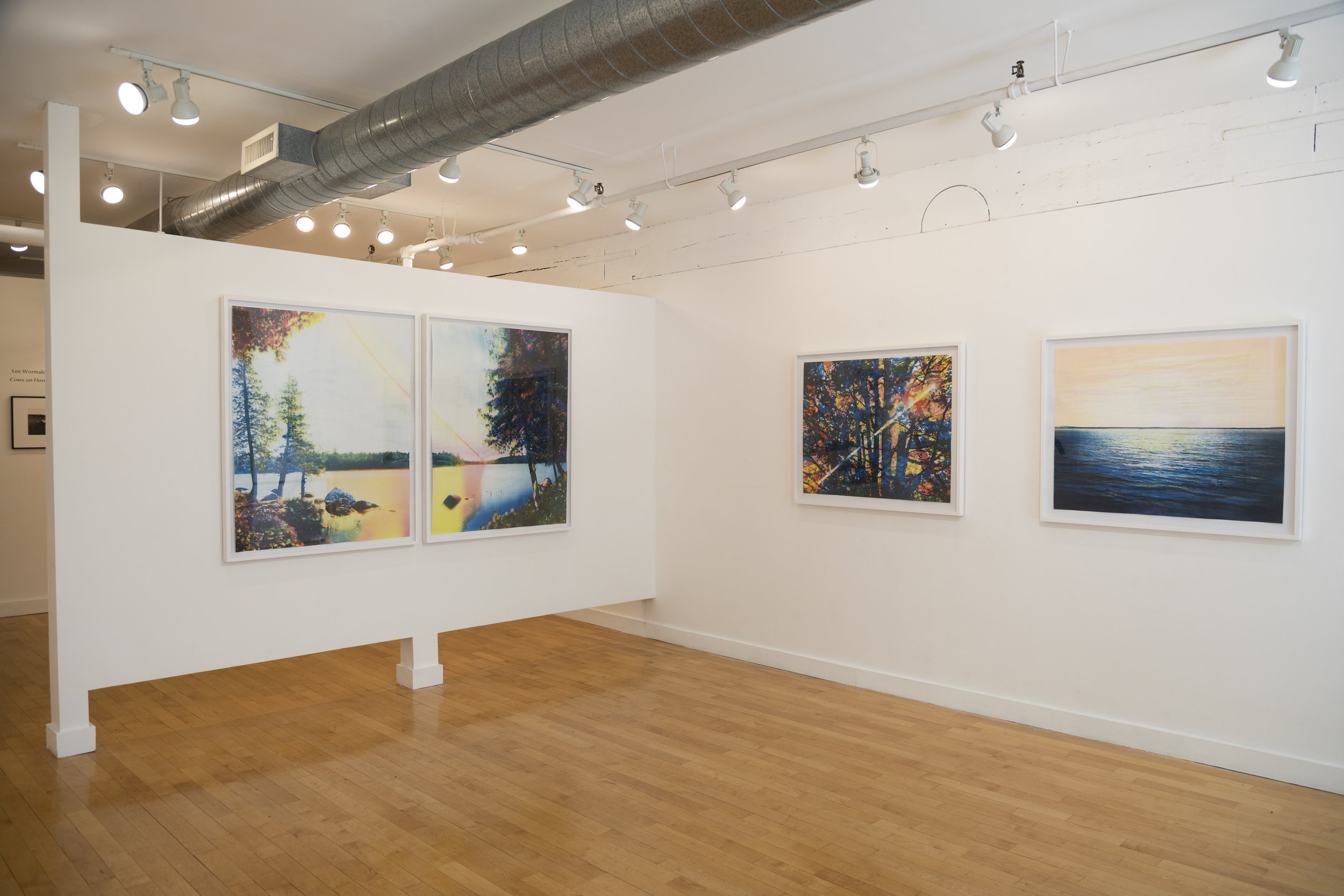
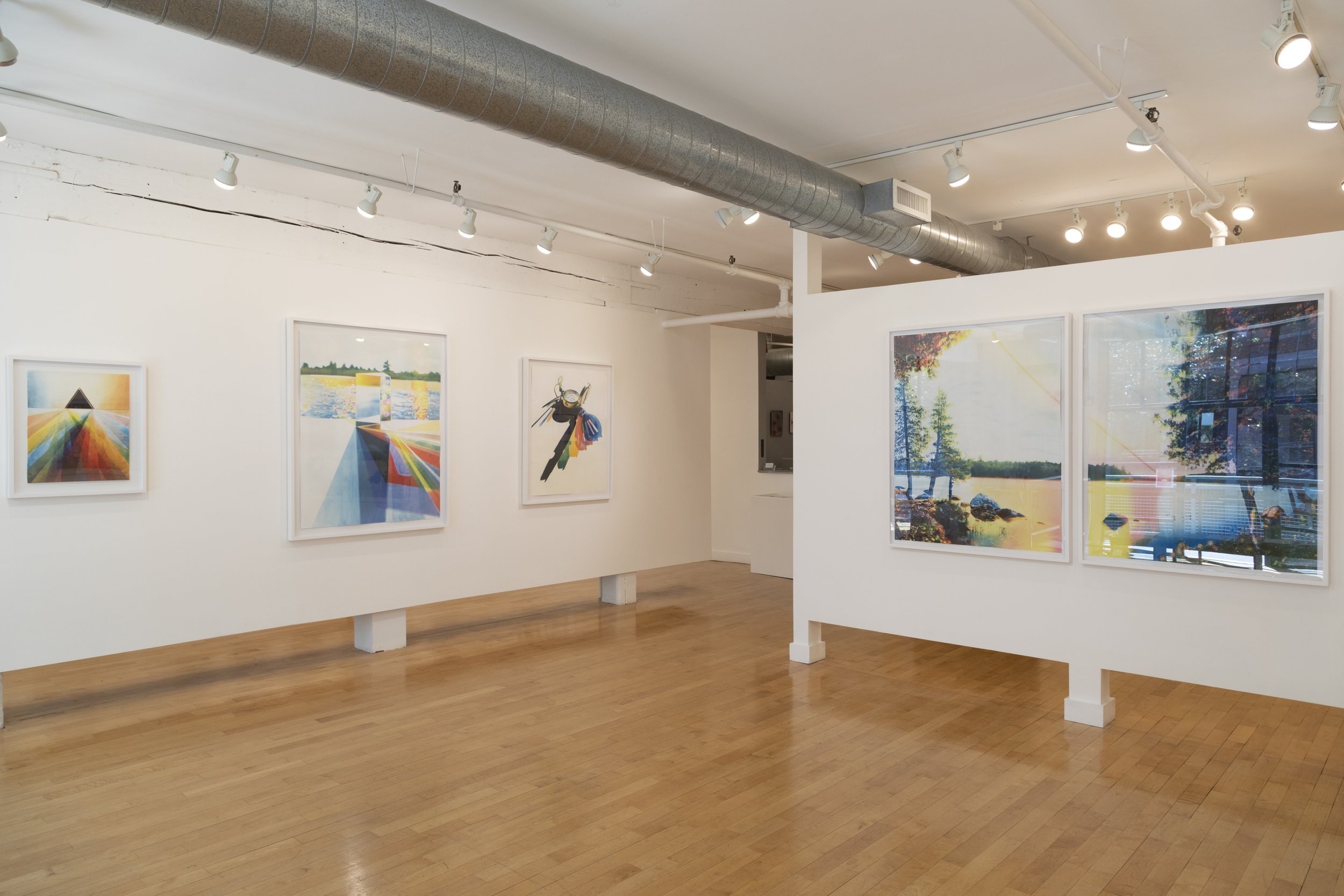
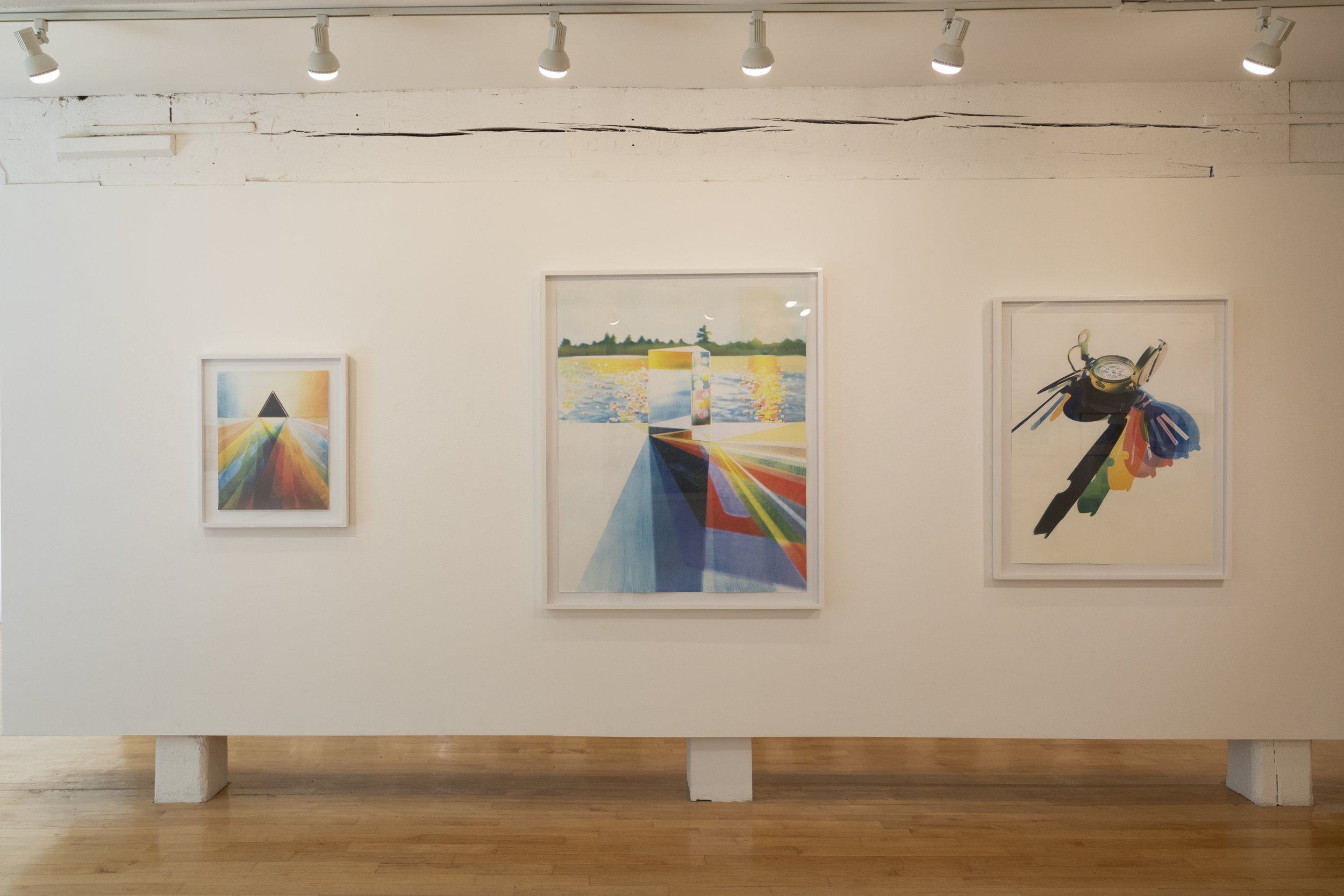
"The most beautiful thing we can experience is the mysterious. It is the source of all true art and all science. He to whom this emotion is a stranger, who can no longer pause to wonder and stand rapt in awe, is as good as dead: his eyes are closed." -Albert Einstein
In 2018 I began experimenting with the photographic process called color separation. I was inspired by the work of Sergey Prokudin-Gorsky, an early practitioner of color photography. As if by magic, color photographs can be created with black and white film. When three negatives are exposed with red, green and blue filters the grayscale exposures function as records of the separated colors within a scene, somewhat similar to using separate screens in printmaking. When the three negatives are assigned to the corresponding color channels in photoshop a full color image appears. Color Channels determine the color of the pixels on the screen. Red pixels correspond to the information contained in the negative that was filtered for red light.
It soon occurred to me that I could record the separated colors across time and space. As the Sun appears to travel through the sky over the course of a day the movement of the sundial’s shadows mark the passage of time. In the morning the face of a rock may be in shadow but upon the arrival of noon it basks in full sunlight. This movement of light across time captured through the color separation process reveals unusual variations in the colors of the world. Sundial with Compass displays a sequence of shadows cast by the object one afternoon. The presence of green in the image, for example, is the absence of red and blue light. This means that green appears in the shadow areas of the red and blue filtered negatives.
In 2020 I was curious if I could apply the experimental nature of the color separation process to the final print. I began pondering how to merge two analog photographic processes with digital inkjet technology to create unique works of color. The process starts by printing the black information on a traditional black and white gelatin silver print. A liquid cyanotype solution is then brushed on the print by hand. A negative of the cyan information is registered over the silver print and exposed to ultraviolet light. Finally, the print is carefully run through an inkjet printer to apply the yellow and magenta ink resulting in a full color image.
For me, wonder is a state of mind somewhere between knowledge and uncertainty. It is the basis of my practice and results in images that are simultaneously familiar yet strange. Each piece begins as a question of visual possibilities and develops in tandem with the natural laws of the world. This process often yields unexpected results measurable only through photographic processes.
Michael Hintlian | Something to Live For
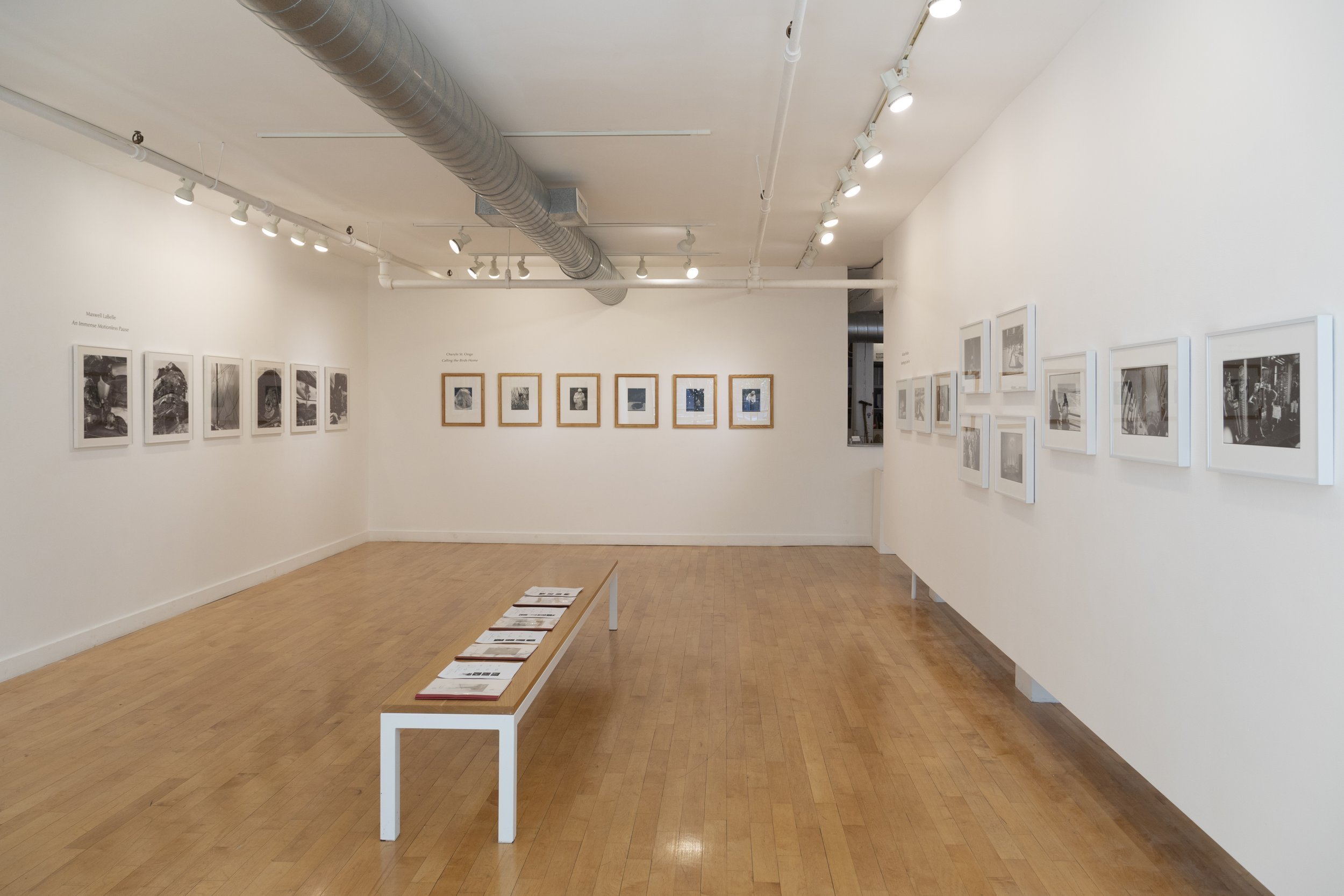
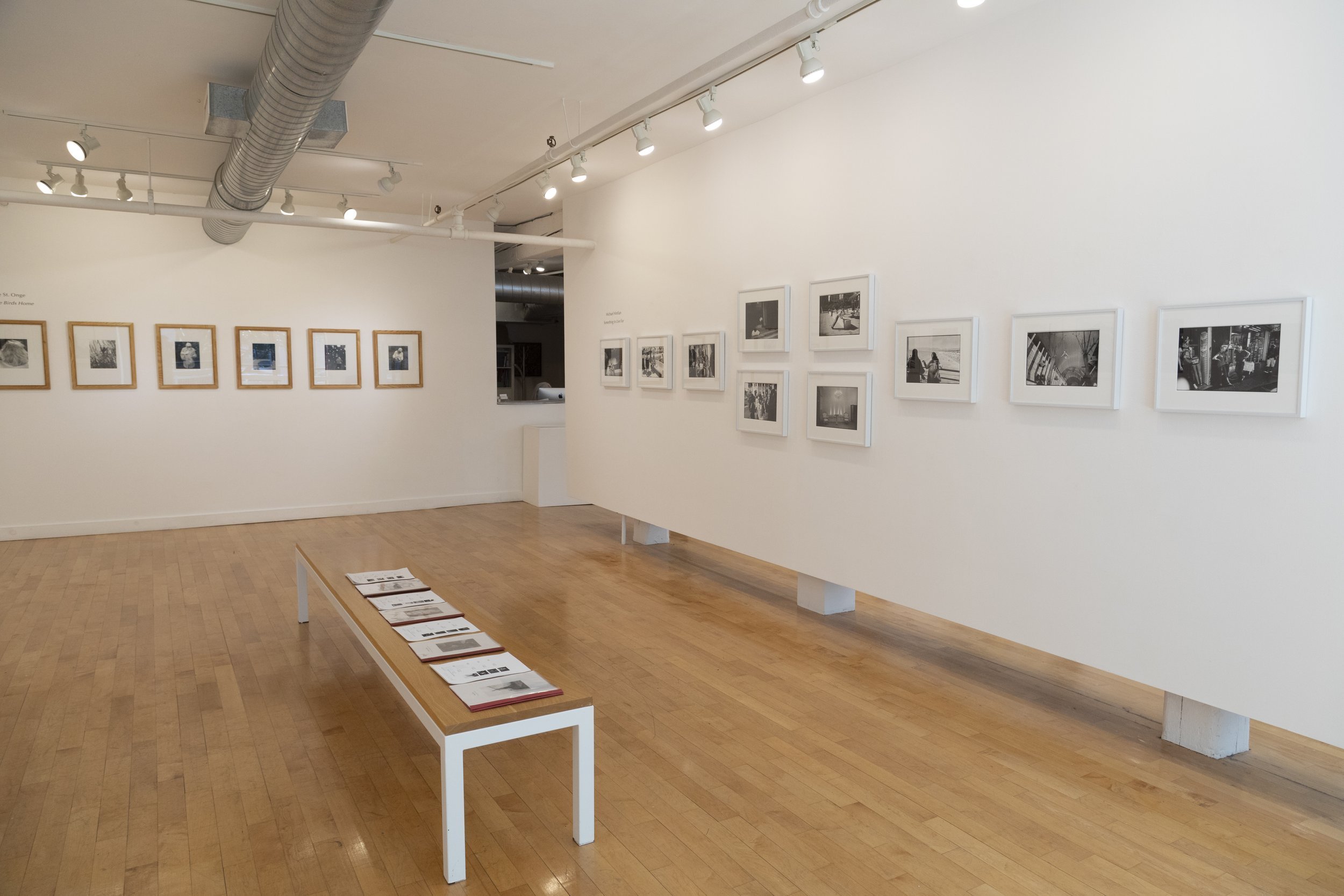
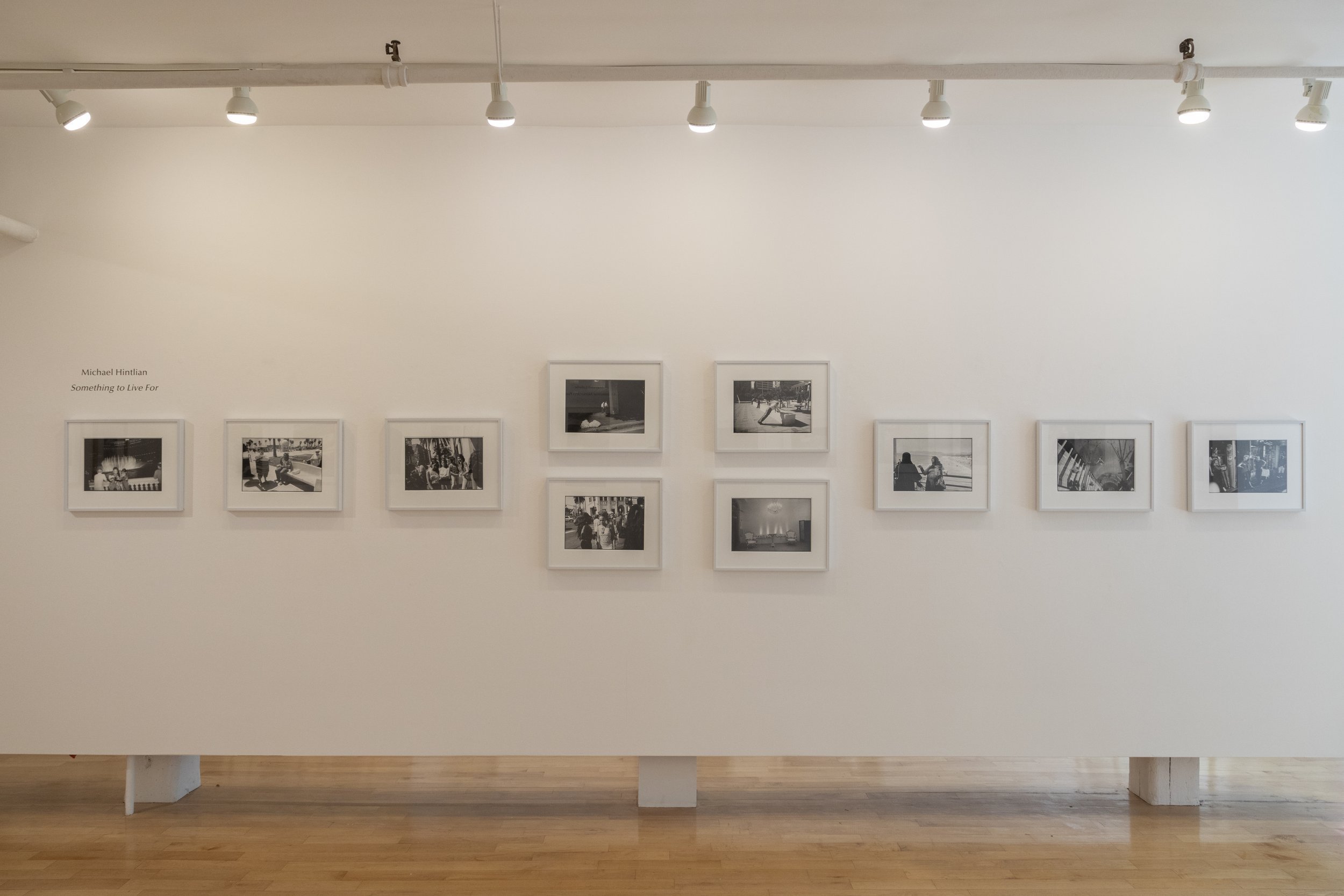
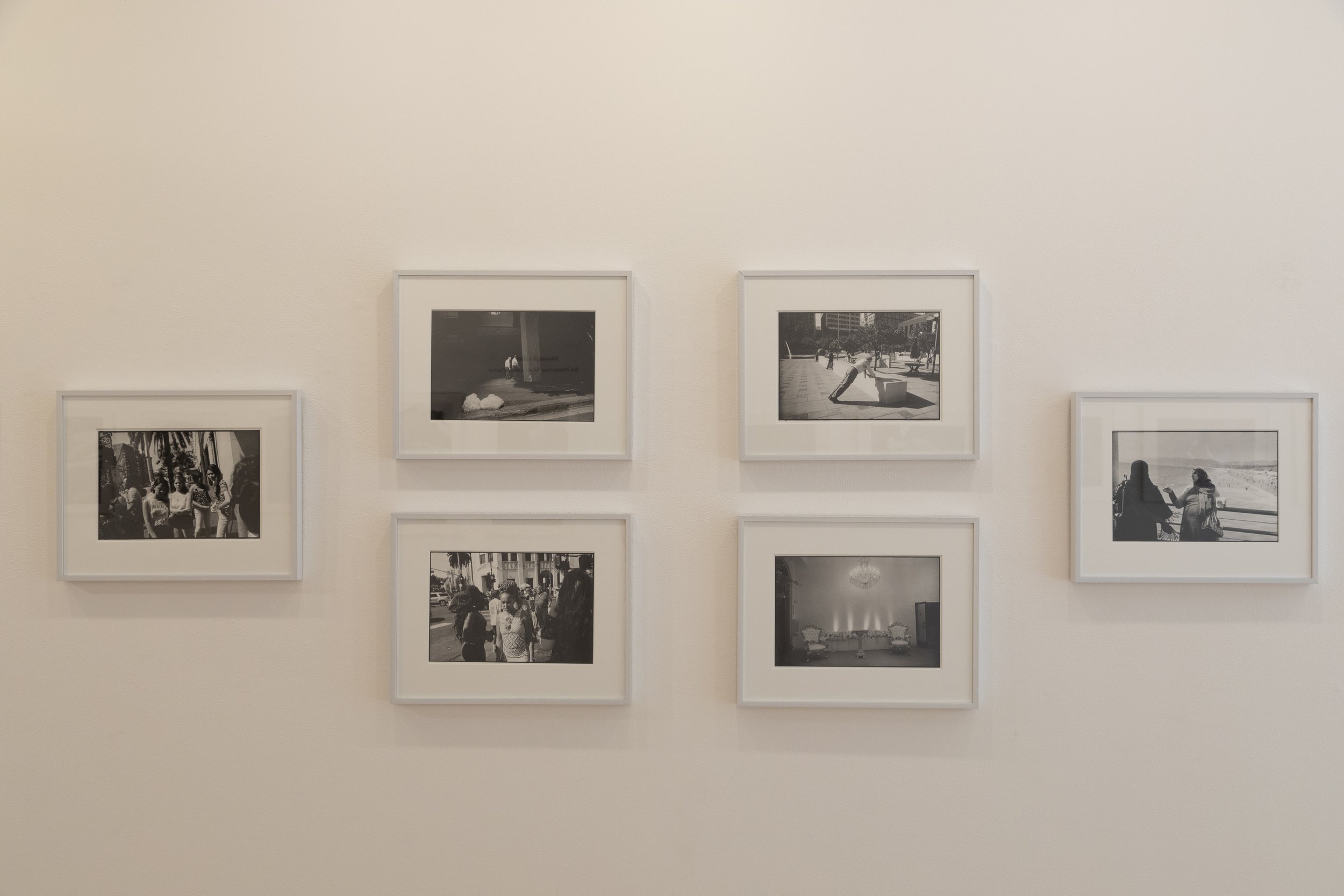
Michael Hintlian is an American photographer based in Boston. Educated at the School of the Museum of Fine Arts and Tufts University. Winner of Traveling Scholarship from the Museum of Fine Arts, Boston. Hintlian’s work has appeared in major U.S. dailies and international periodicals, and has been widely exhibited and collected. His photo-documentary Digging: The Workers of Boston’s Big Dig was published in 2004. Hintlian has served on the faculties of The School of the Museum of Fine Arts, Boston, The New School for Social Research, and Parsons School of Design, New York. He is an adjunct instructor in photography at Massachusetts College of Art and Design. Currently he is at work on major projects in the United States and travels extensively.
Ross Kiah | A Quiet Corner
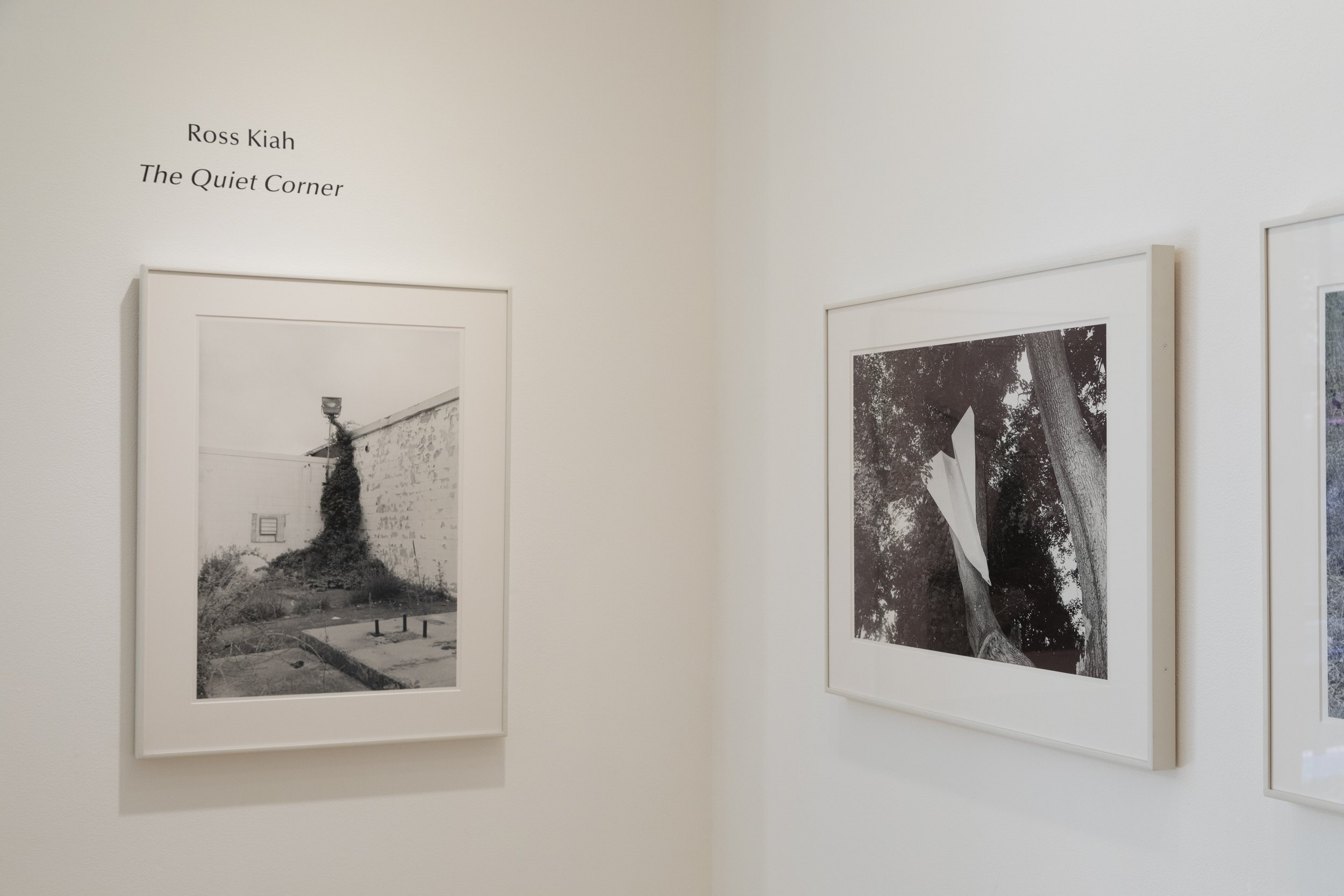
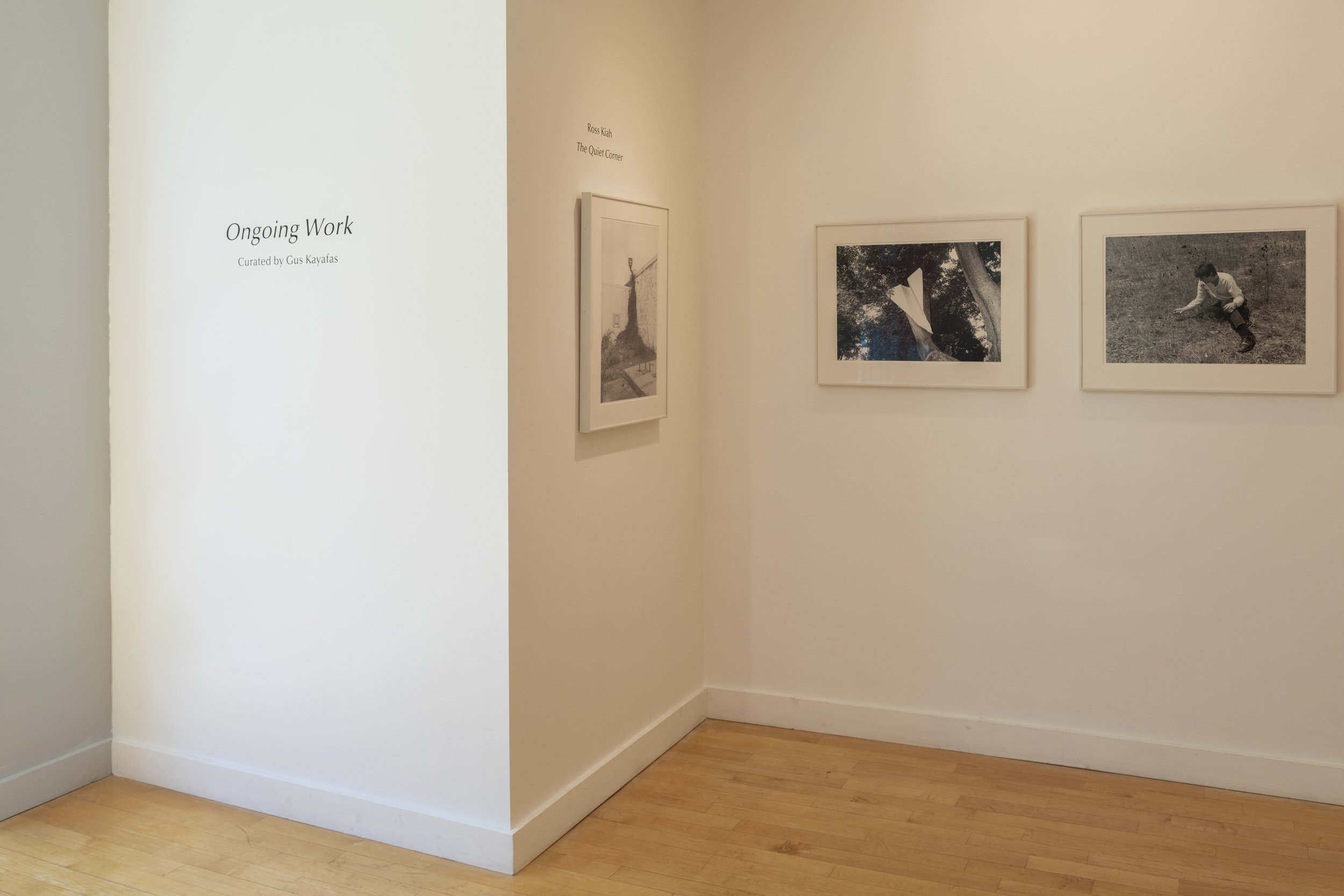
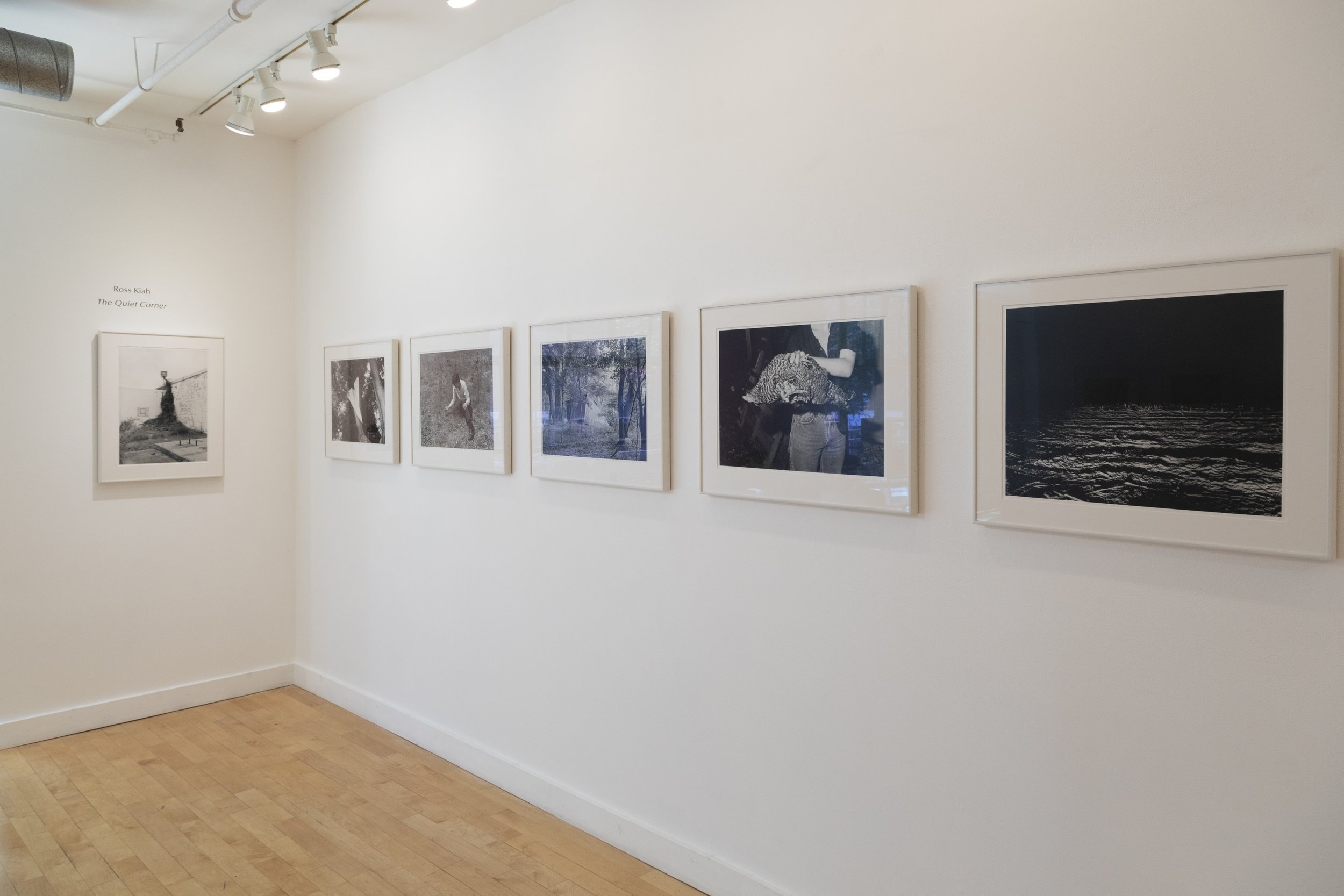
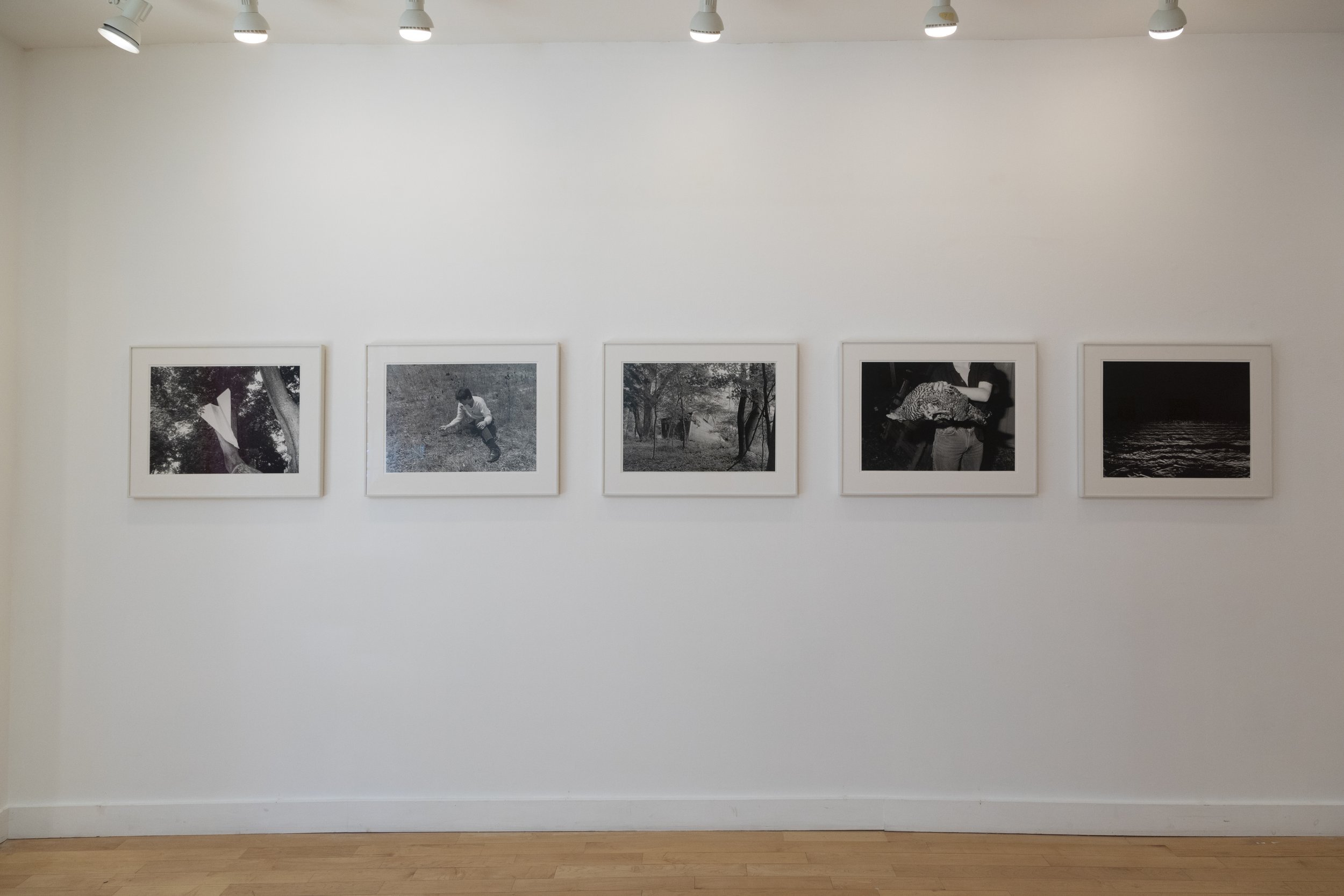
A series of murders were committed in the 1980s in Windham County, CT, colloquially dubbed ‘The Quiet Corner’. The victims were all young women and girls aged 14-26. The assailant was a white man in his mid-twenties. As a child he was physically and emotionally abused by family members on the farm where he grew up in the seemingly serene and quaint town of Brooklyn.
Recognizing my place within this demographic, I began exploring the origins of masculine violence, especially against women. These images explore cycles of abuse, illusions of power and control, and the ubiquitous threat of danger that exists as a result.
Maxwell LaBelle | An Immense Motionless Pause

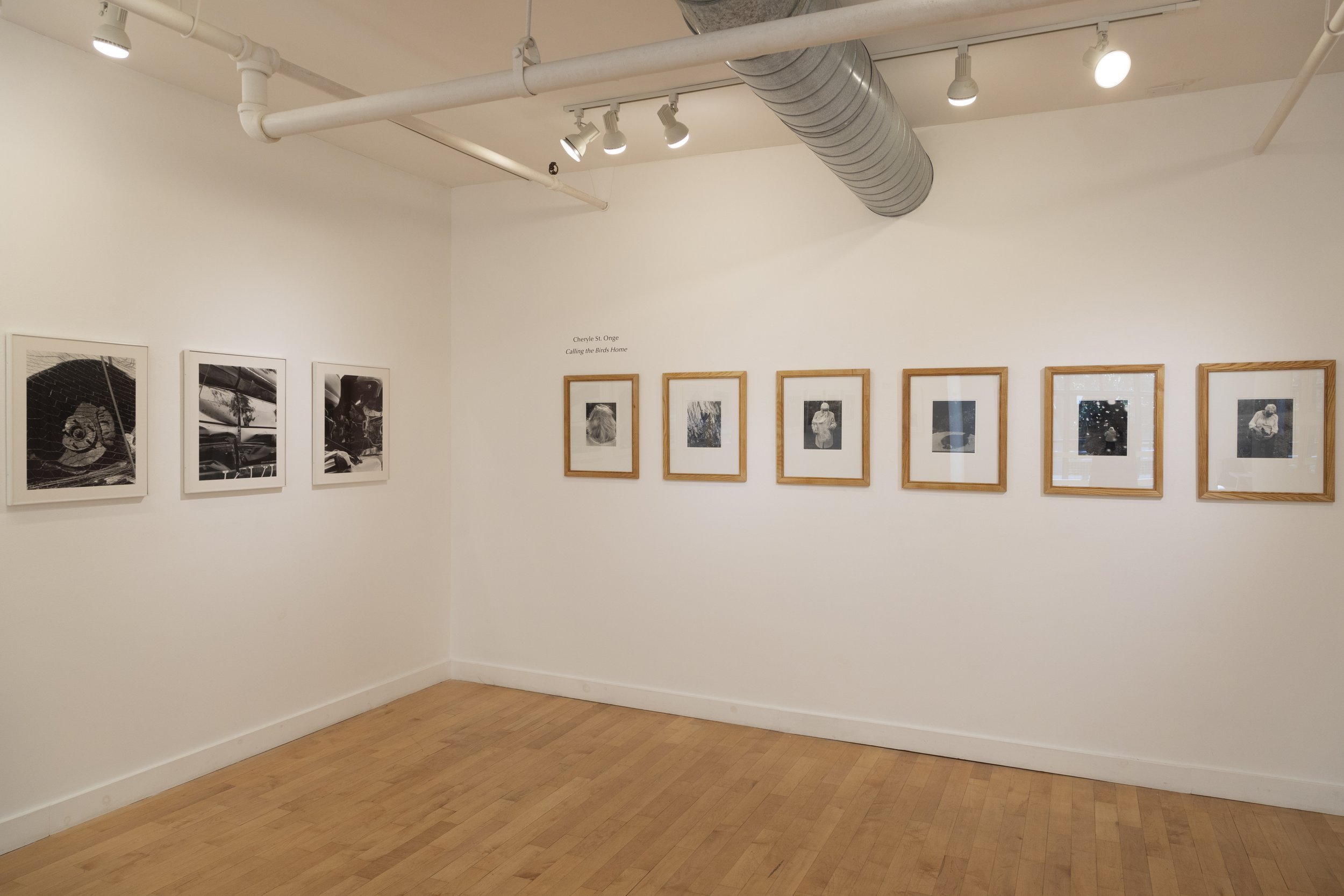
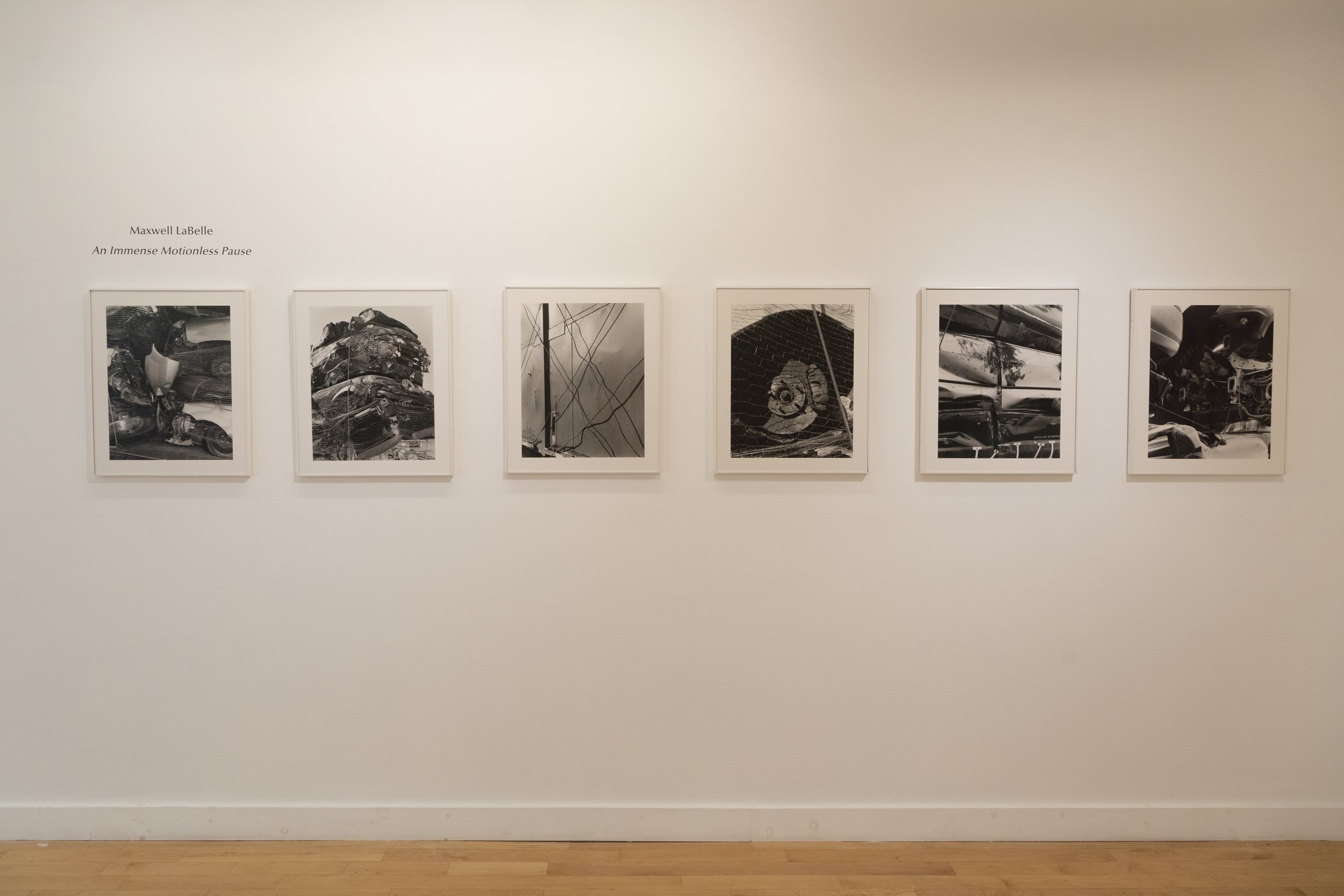
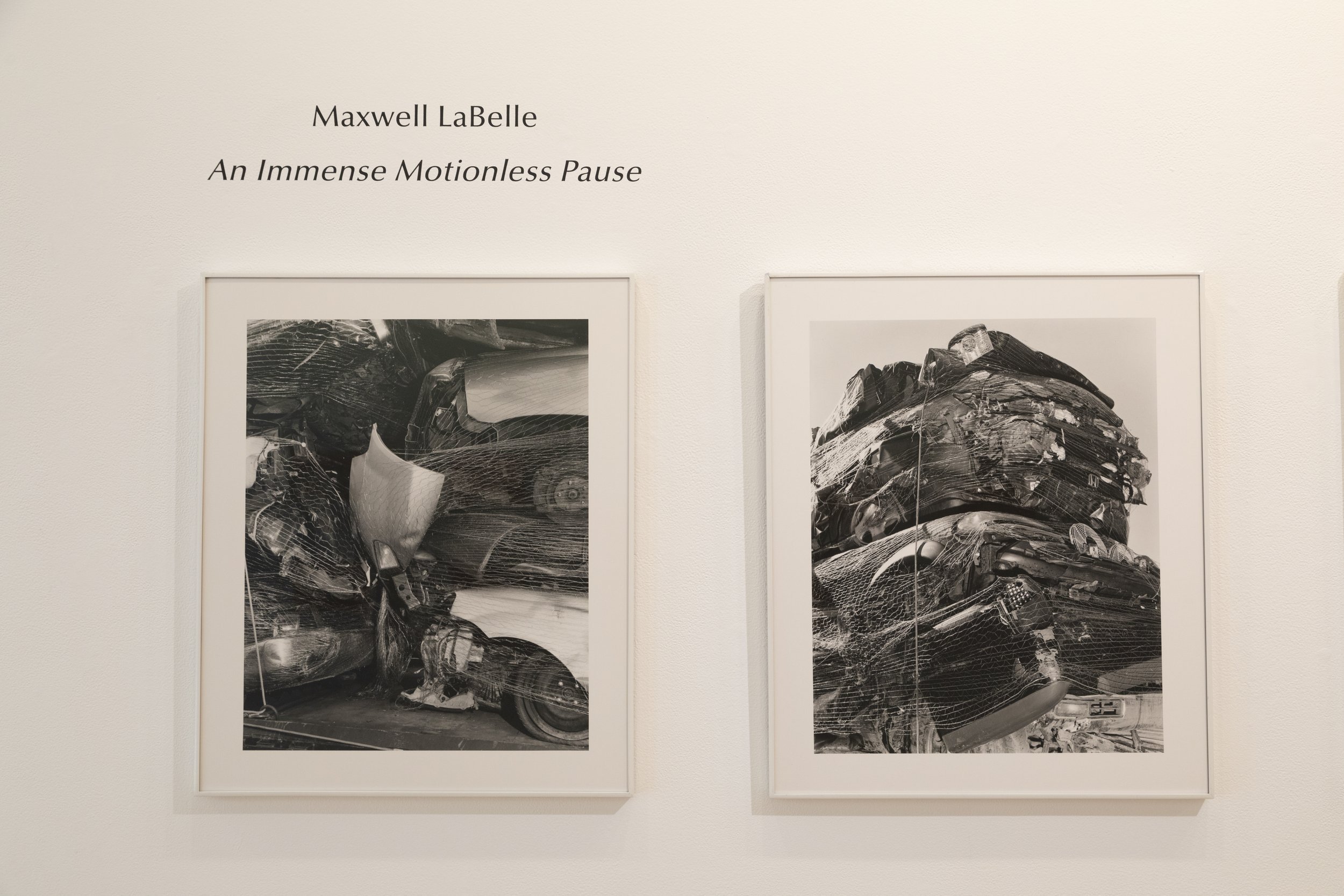
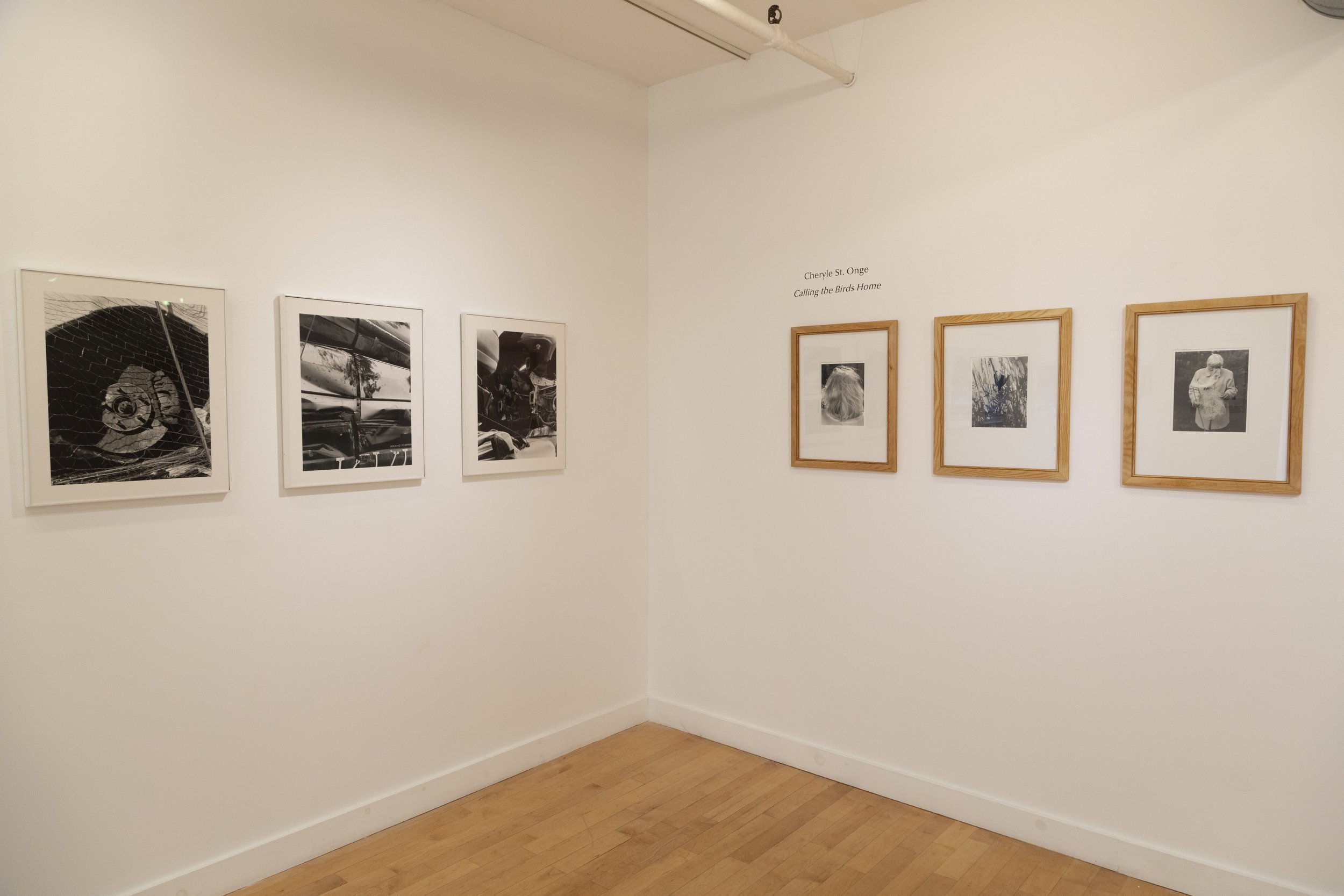
The photographs in “An Immense Motionless Pause” were taken in Lynn on a stretch of road lined with new and used car dealerships. Between the businesses are anonymous parking lots where trucks piled high with crushed cars are left on weekends before departing for their final dismantling and destruction. The terrifying contrast of destroyed and new cars living next to each other inspired me to begin working. In this intermediary place between collision and scrap, normally not displayed, the devastation of the crash is paused, the effects of force and speed are made visible.
Michael LaFleur | Main South ETC
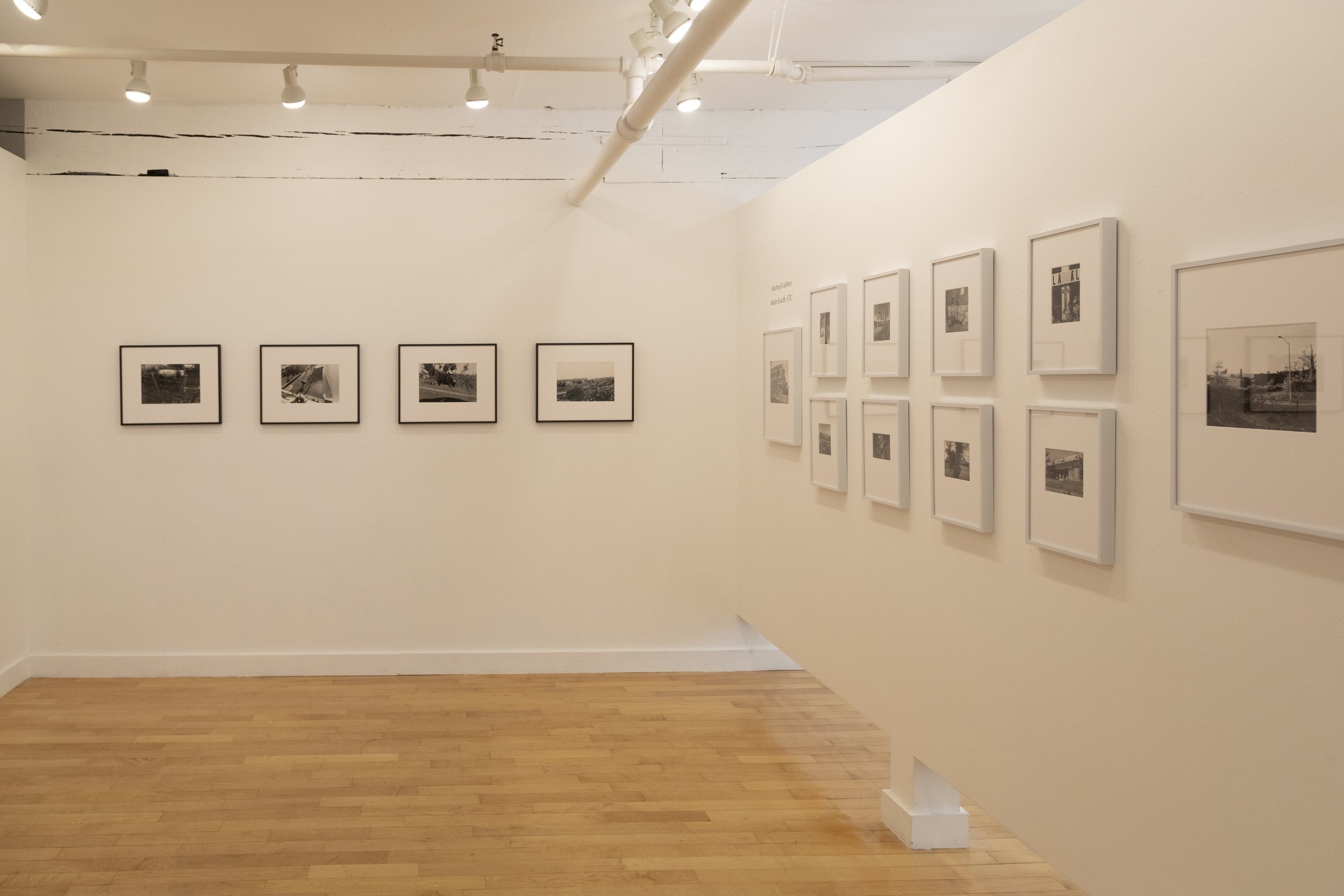
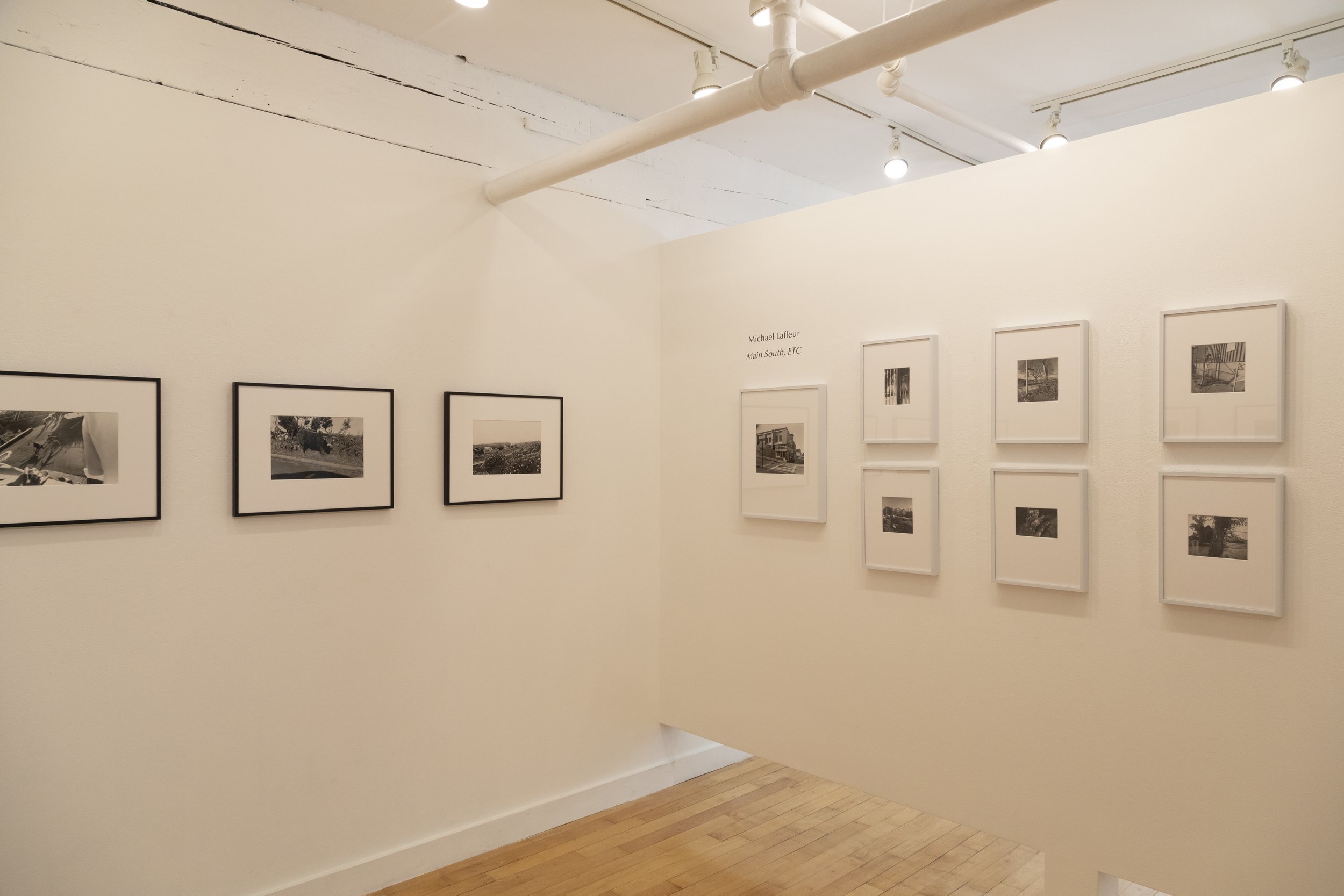
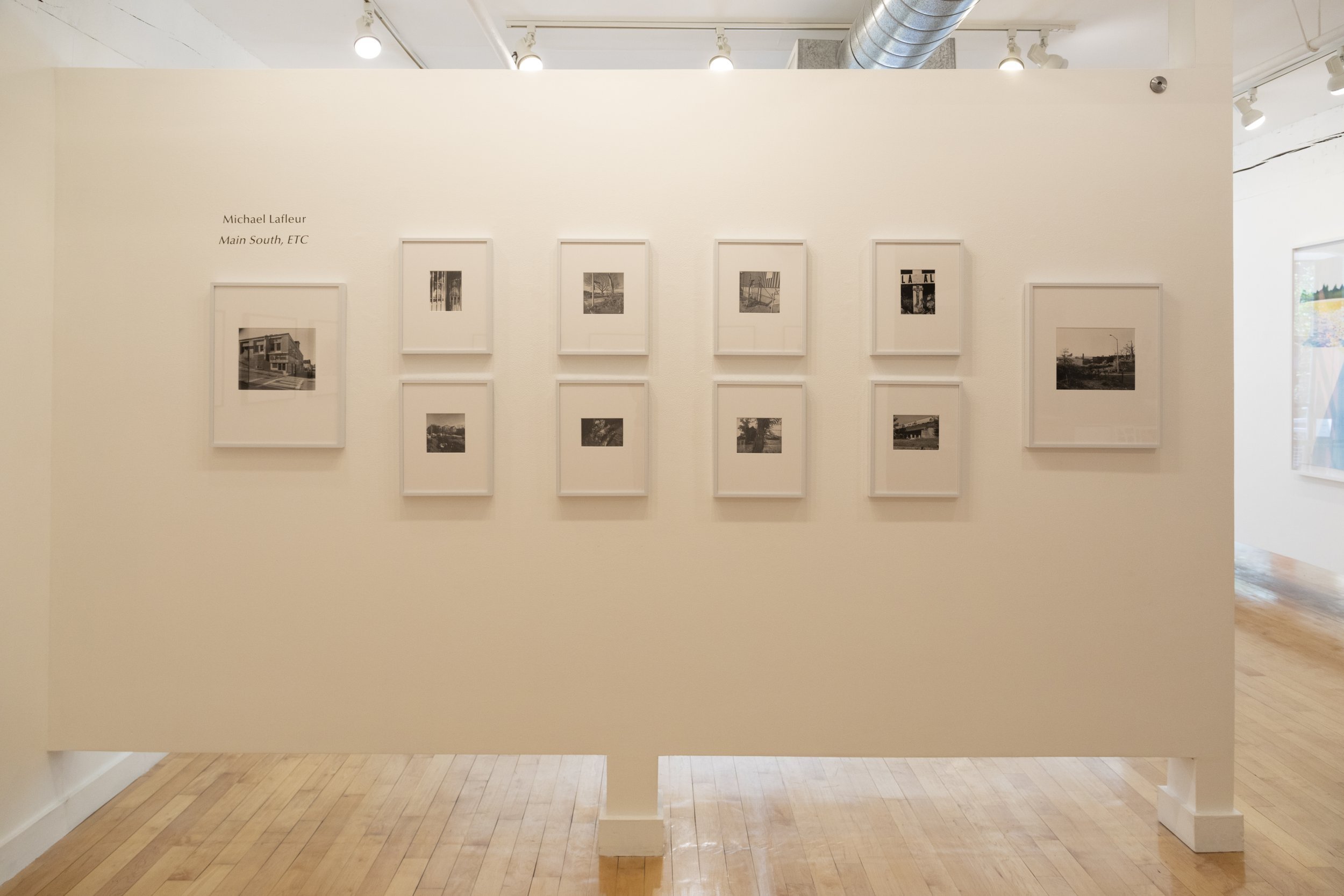
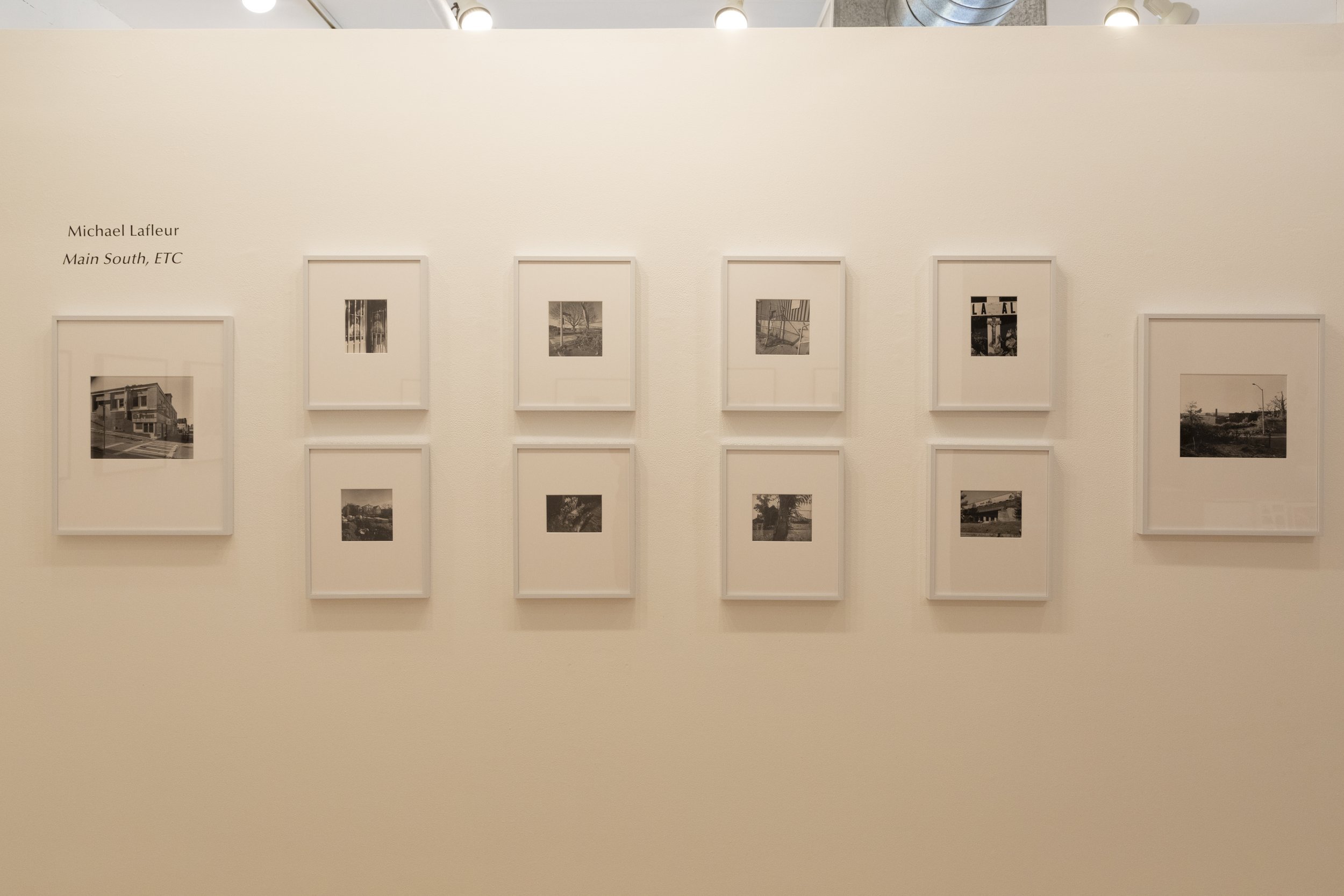

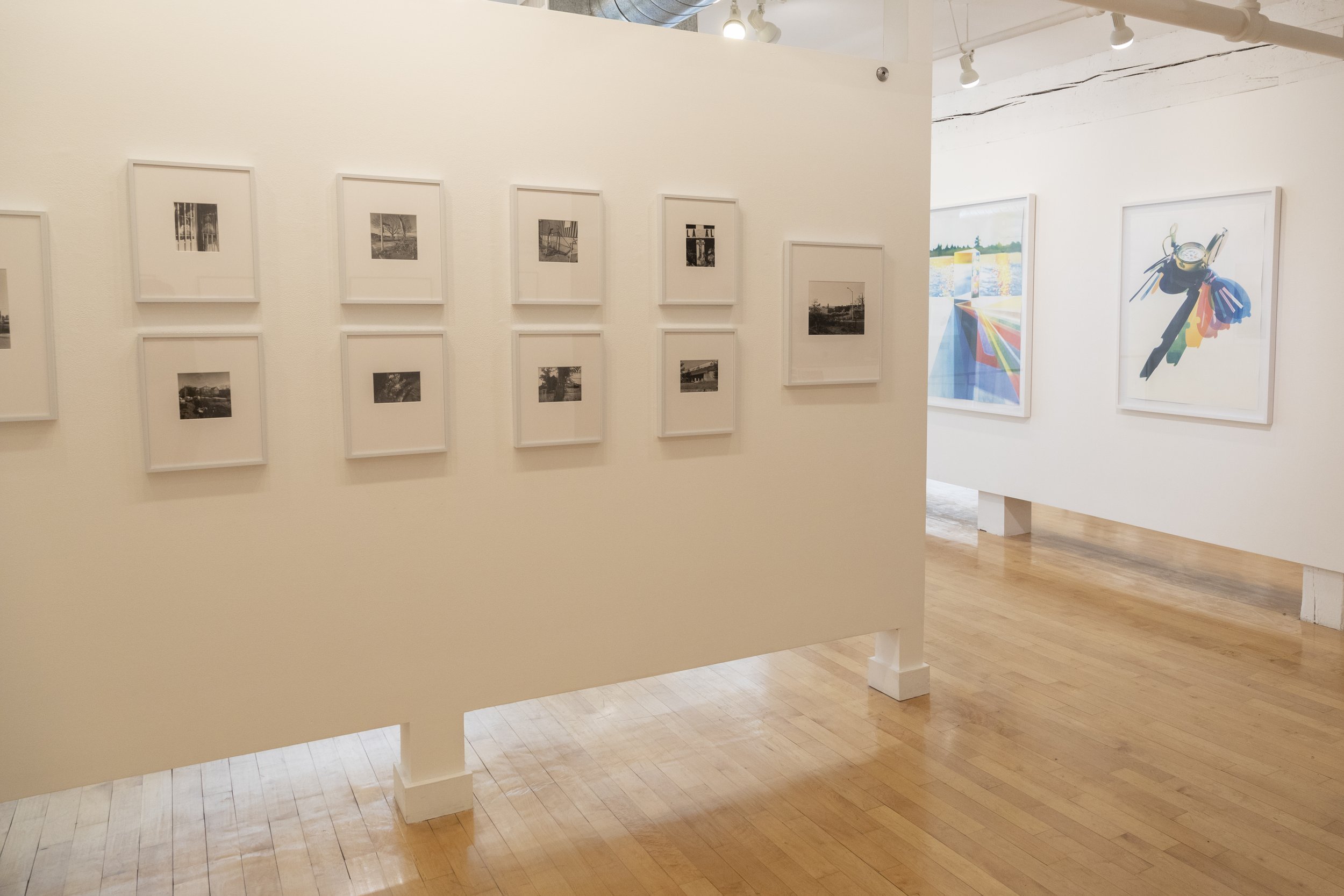

Eastbound
Wandering down
Main Street
Dreaming of Dostoyevsky,
and how I might manage to weave this into a story.
I travel by sun soaked spiritual shoppes on the edge of the evening
and find sidewalk memorials where Paola Alba once passed.
Curiously searching for the idea that had placed me here –
Polar Park, and how it might alter the neighborhood, but
I am caught off guard by a man in his garden who offers me a rose
for my sweetheart. I say, “Thank you, but I believe we’re beyond what
a flower may mend.”
How else could I express
I love you on Lunelle Street
-m, 2022
Cheryle St. Onge | Calling the Birds Home


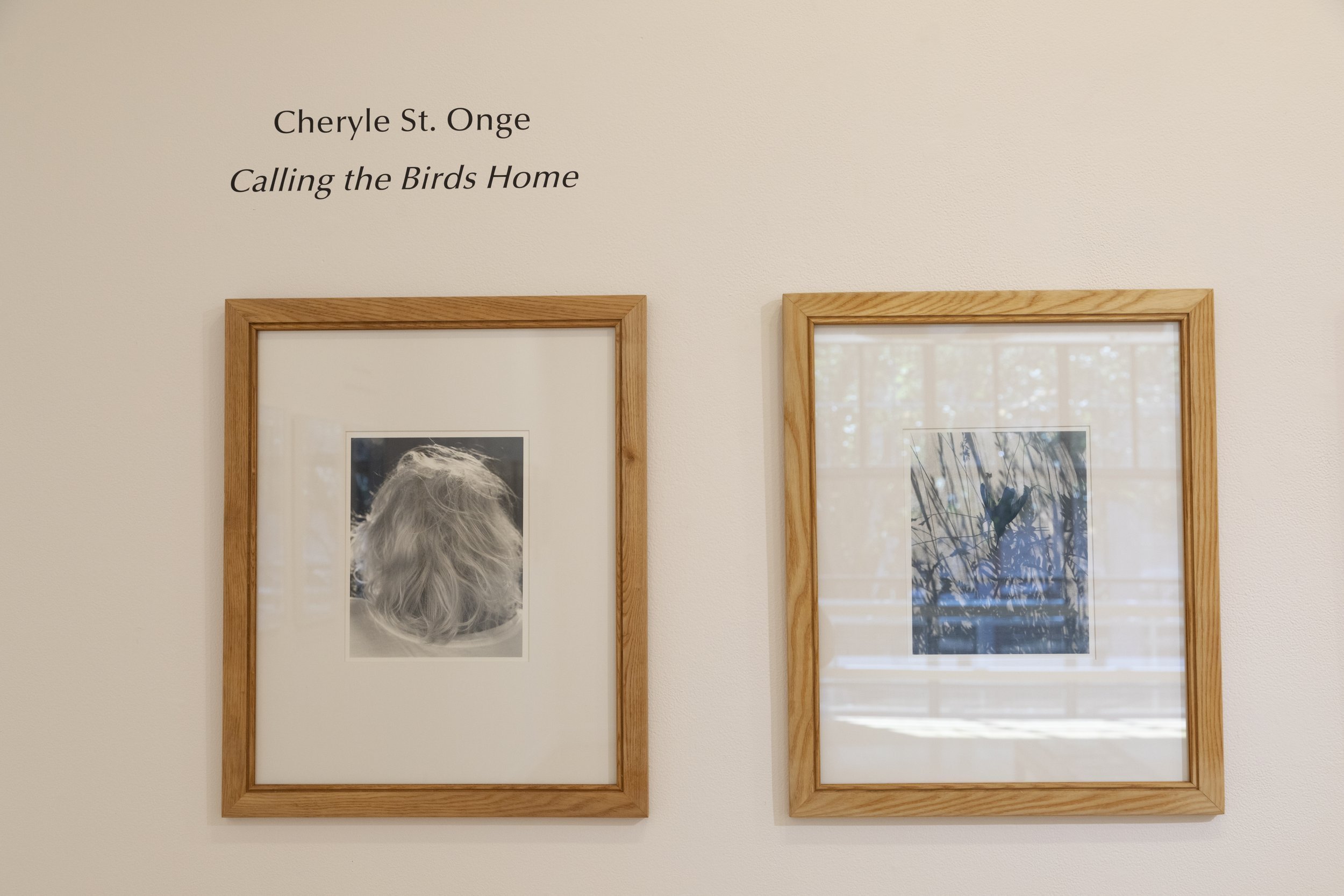
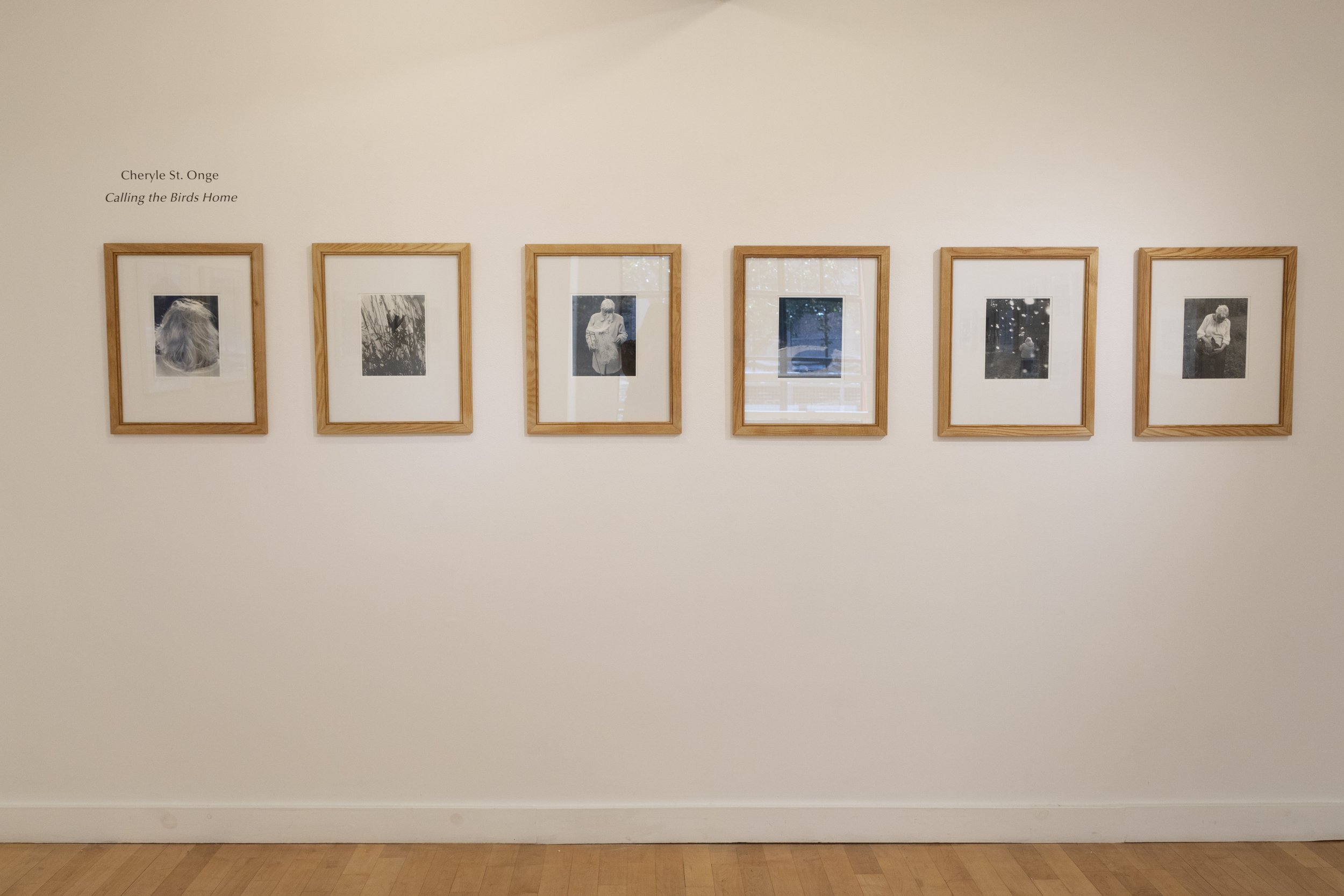

Calling the Birds Home is a photographic exchange of the energy of life—the give and take of the familial between mother and daughter who lived side by side on the same New Hampshire farm for decades. Our love was mutual and constant. In 2015 my mother developed vascular dementia, and with that began the loss of her emotions and her memory and the relationship of mother and daughter as we had known it for nearly 60 years. In my mother’s earlier life, she was a painter and then in more recent decades she began to carve birds. A carving would begin with her vast knowledge of birds, her research and then after whittling away at chunks of wood. My mother would eventually offer up an exquisite painted out chickadee or barred owl, life size and life like. I began to photograph her with any camera in reach—an iPhone or an 8x10 view camera as a distraction from watching her fade away, as a counterbalance to conversation with her about death, as a means to record the ephemeral nature of the moment, to find some happiness and light, and to share the images with others we loved.
Because of the dementia, my mother and I no longer had conversations. But we did still have a profound exchange through photography. She must have recalled our history and the process of picture making because she brightened up and was always eager and willing to be photographed. My mother did her best and I did mine. And then in turn, I offered up the pictures away to anyone who would look. It was an excruciating form of emotional currency.
My mother died at home On Oct 3. 2020. Time has been excruciatingly measured by that loss. A year to reflect on the passing of time, sans her, measured out within a snowy winter, over a family holiday in August, through a fall afternoon watching migrating birds pause at her feeder. The expanding and the contracting of 365 days with hope and longing for some semblance of her anywhere.
Cheryle St. Onge grew up in coastal New England, the daughter of a painter and physicist. Her proximity to the ocean and riding horses as a child shaped her curiosity of nature. She received her M.F.A. from Mass Art and has been on the faculty of Clark University, Maine College of Art and Univ. of New Hampshire. St. Onge is the recipient of a Guggenheim Fellowship, Critical Mass Exhibition Award, New Hampshire Charitable Arts Grant, Polaroid Artist Support. Her work is widely collected, privately and publicly most notably, the Polaroid Corp, the Univ. of New Mexico Art Museum, the Portland Art Museum, Fidelity Corp. and the Guggenheim Foundation.
Lee Wormald | Cows on Flores

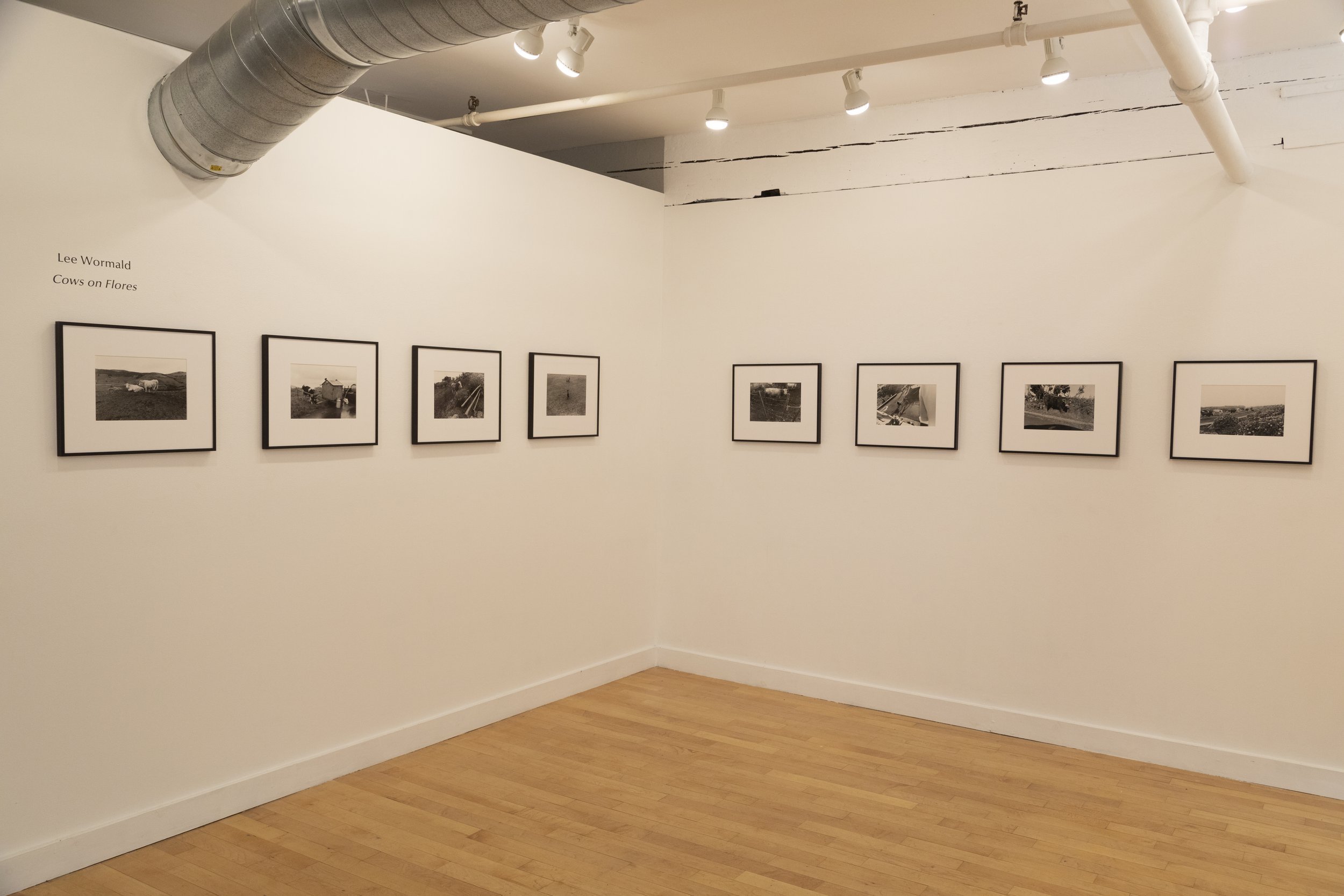


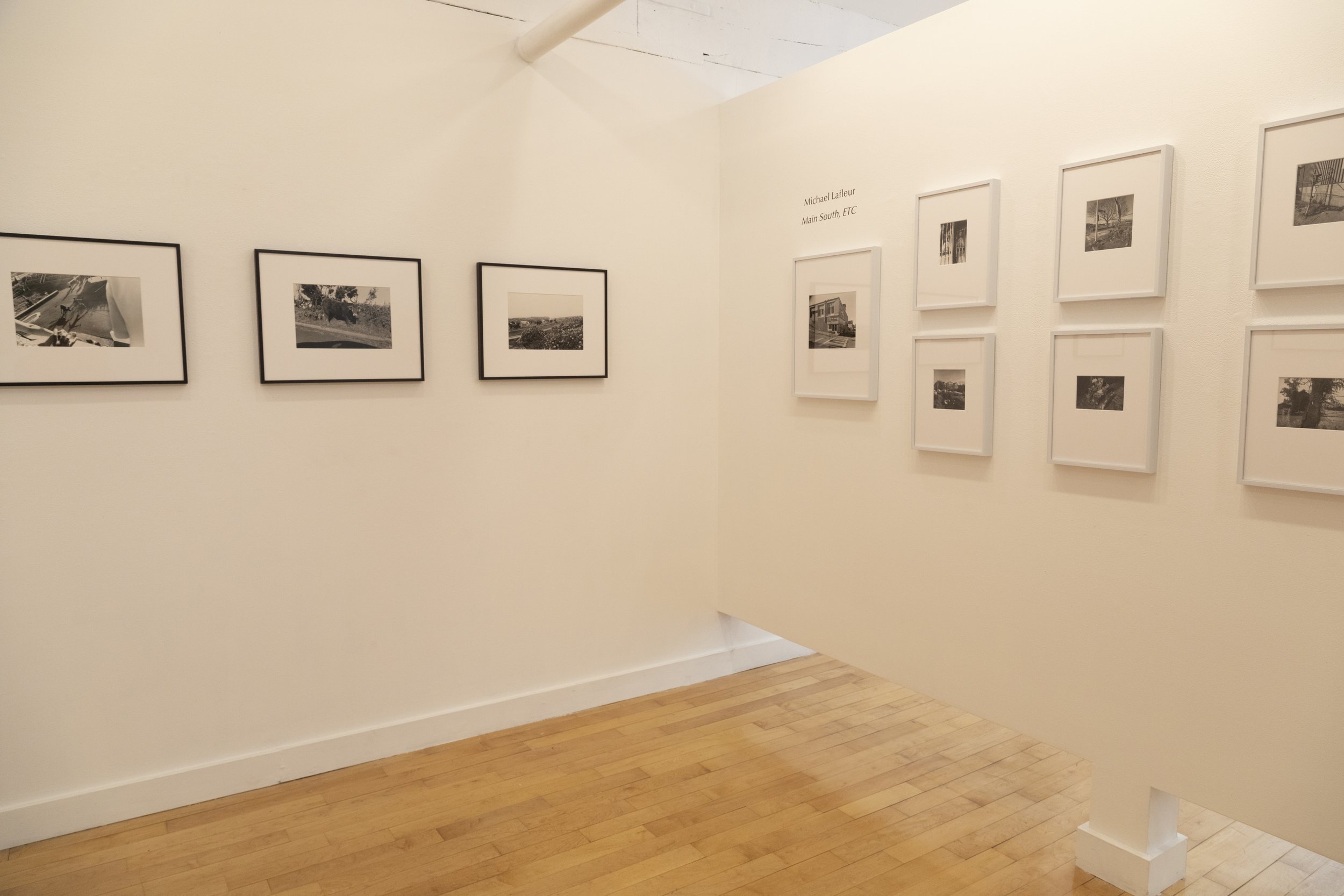
These photographs are made on the Island of Flores, Azores (Açores). I have been photographing on the island since 2014, and while attempting to bring structure to the larger body of work, I noticed these cows looking back at me.
The dairy industry has a rich history on the island. In 1915 Father José Furtado Mota organized the Sindicato Agrícola da Ilha das Flores (Flores Farming Union), the first on the island and one of the first three in the dairy sector in the whole of Portugal. This year, the the Cooperativa Ocidental (Western Cooperative), the largest cheese factory on the island, closed - and with that, ending a hundred year old agricultural history.
Lee Wormald is a Stoughton Massachusetts based photographer. He received a BFA in Photography from Lesley University College of Art and Design in 2016.
